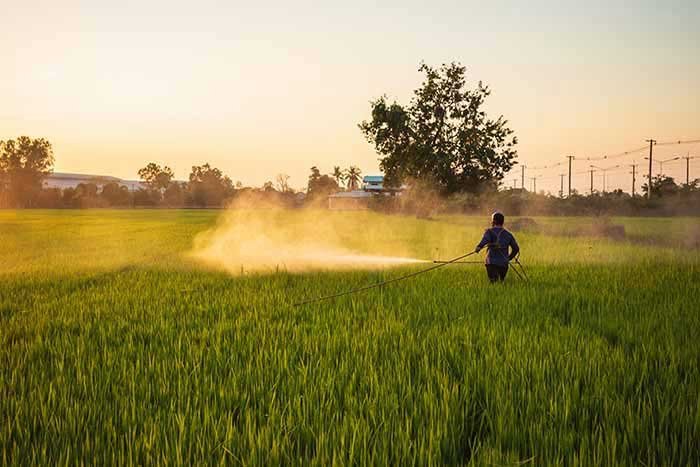
Herbicides are substances, either chemical or biological, that are used to control, kill or eliminate unwanted plants, commonly referred to as weeds.
Weeds can be problematic because they compete with desirable plants for resources such as water, nutrients, and light, reducing crop yields or degrading the aesthetics of a particular area.
There are several types of herbicides:
Herbicides work by disrupting or interfering with the normal metabolic processes of plants, ultimately leading to their death.
Plants are only killed by these herbicides if they come into contact with the parts of their plant they are killing, such as leaves or stems.
These herbicides are absorbed by the plant and move through the plant’s vascular system, killing the entire plant, including the roots.
These herbicides target specific types of plants and are used to control weeds in crops or other desired plants while leaving the desired plants unharmed.
In non-crop areas, herbicides are used to control weeds and clear land for new planting. They kill all plants they come into contact with.
Used of Herbicides
It’s important to use herbicides responsibly and in accordance with the manufacturer’s instructions and relevant regulations, as overuse or misuse can have unintended consequences such as environmental pollution, harm to non-target organisms, and development of herbicide-resistant weeds.
Some specific examples of herbicide use include:
In agriculture, horticulture, landscaping, and forestry, herbicides are commonly used to control weeds.
01
Crop productionHerbicides are used to control weeds in crops, which can reduce yield losses due to weed competition and make harvesting easier. Selective herbicides are often used in conjunction with tillage, crop rotation, and other weed management practices to minimize the development of herbicide-resistant weeds.
02
Landscaping and turf managementHerbicides are used to control weeds in lawns, gardens, and other landscaped areas. Selective herbicides are often used to control broadleaf weeds in turfgrass, while non-selective herbicides are used for spot treatment of weeds in gardens and other non-crop areas.
03
ForestryHerbicides are used to control competing vegetation in tree plantations and other forested areas, which can help promote the growth of desired tree species and reduce fire hazards.
04
Aquatic weed controlHerbicides are used to control weeds and other unwanted vegetation in ponds, lakes, and other aquatic environments. Specialized herbicides are used that are designed to break down quickly in water and minimize harm to aquatic life.
05
Railroads, highways, and other infrastructureHerbicides are used to control weeds and other vegetation along railroads, highways, and other infrastructure to improve safety and visibility.
The following are some general steps to follow when using herbicides
- Identify the weed species
- Select the appropriate herbicide
- Determine the application rate
- Apply the herbicide
- Monitor and evaluate
- Dispose of herbicide containers and leftover materials properly

The use of herbicides should be carefully planned and executed to ensure effective weed control while minimizing harm to non-target organisms and the environment.
Here are some additional details about herbicides:

Modes of action : Herbicides work by targeting different metabolic processes in plants, such as photosynthesis, cell division, or growth hormones. Understanding the mode of action of a herbicide can help in selecting the most effective herbicide for a particular weed species.Selectivity : Herbicides can be selective, affecting only certain types of plants, or non-selective, affecting all plants. Selective herbicides are commonly used in crops or lawns to control weeds while leaving desirable plants unharmed.Application methods : Herbicides can be applied using various methods, such as spraying, injecting, or granular application. The choice of application method depends on the herbicide type, the target weed, and the size and shape of the area to be treated.
Environmental considerations : Herbicides can have unintended effects on non-target organisms, such as pollinators, aquatic life, and soil microorganisms. It's important to follow label instructions and local regulations to minimize harm to the environment.Herbicide resistance : Overuse or misuse of herbicides can lead to the development of herbicide-resistant weed species. To prevent or delay the development of herbicide resistance, it's important to rotate herbicides, use multiple modes of action, and use non-chemical weed control methods when possible.Precautions : Herbicides can be toxic and potentially harmful to human health, so it's important to take appropriate precautions, such as wearing protective clothing and equipment, avoiding contact with skin and eyes, and following label instructions carefully.
